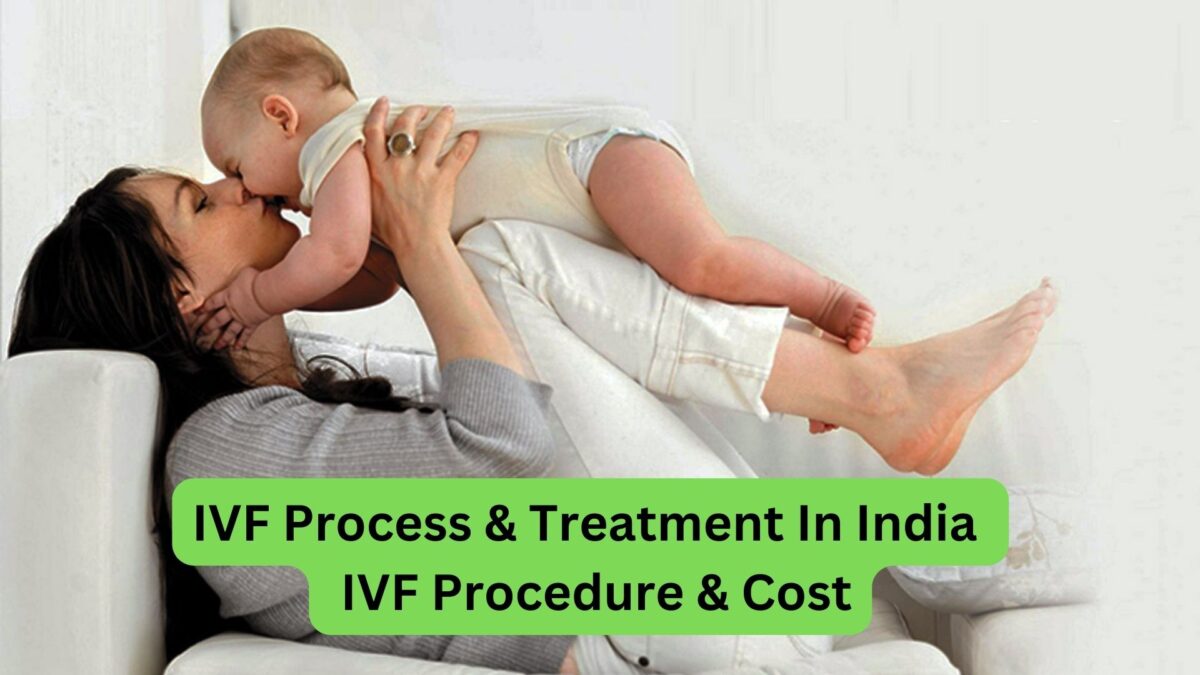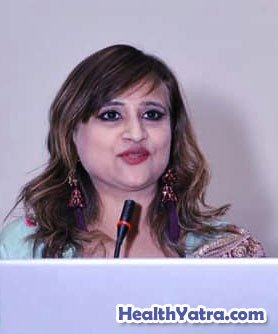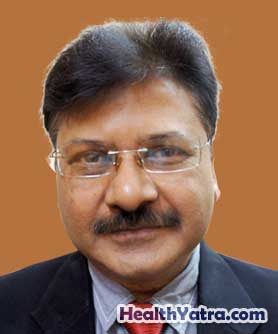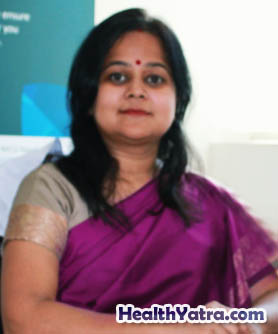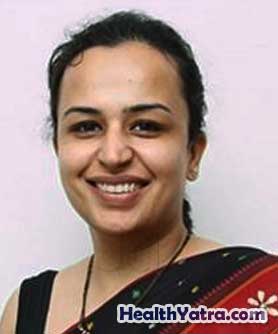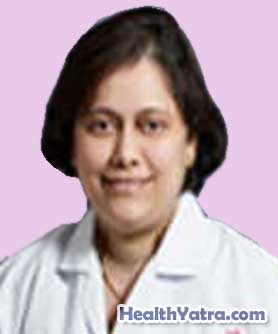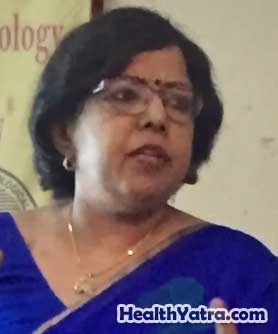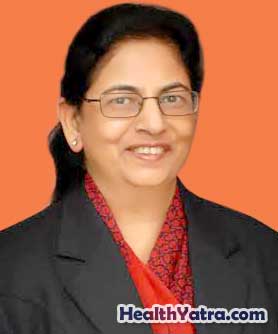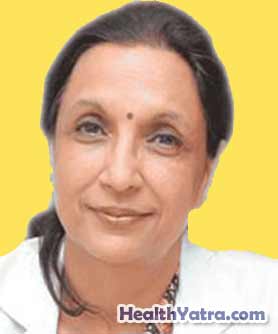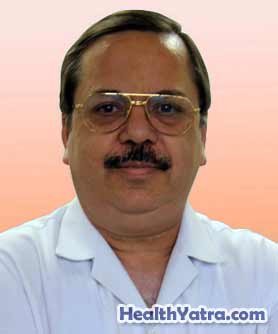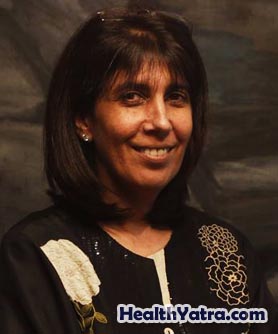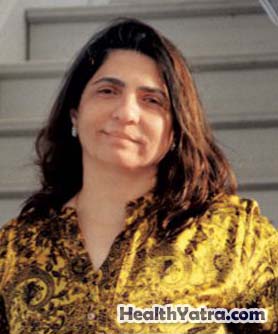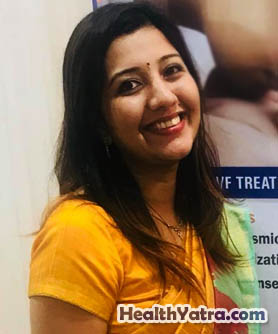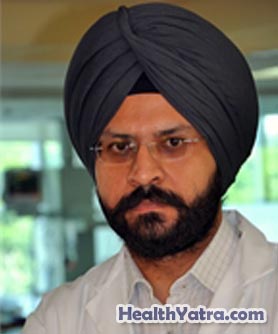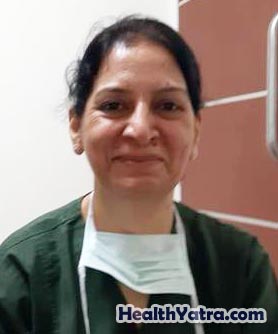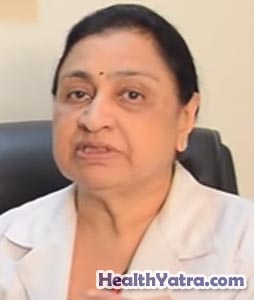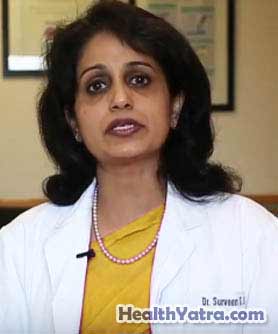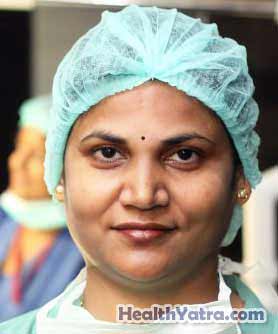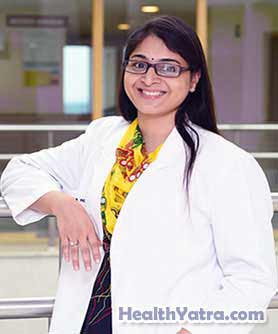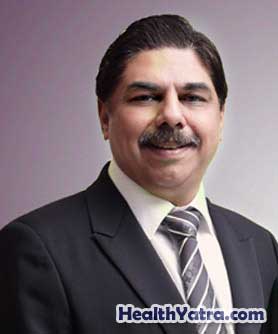IVF Treatment in India: IVF is the basic assisted reproduction technique, in which fertilization occurs in vitro (literally, in glass). The man’s sperm and the woman’s egg are combined in a laboratory dish, and after fertilization, the resulting embryo is then transferred to the woman’s uterus. The five basic steps in an IVF treatment cycle are superovulation (stimulating the development of more than one egg in a cycle), egg retrieval, fertilization, embryo culture, and embryo transfer. IVF is a treatment option for couples with various types of infertility, since it allows the doctor to perform in the laboratory what is not happening in the bedroom – we no longer have to leave everything upto chance!
Initially, IVF was only used when the woman had blocked, damaged, or absent fallopian tubes (tubal factor infertility). Today, IVF is used to circumvent infertility caused by practically any problem, including endometriosis; immunological problems; unexplained infertility; and male factor infertility. It is a final common pathway, since it allows the doctor to bypass nature’s hurdles and overcome its inefficiency, so that we can give Nature a helping hand!
What Causes Infertility
Infertility is not always a woman’s problem. In only about one-third of cases is infertility due to the woman (female factors). In another one third of cases, infertility is due to the man (male factors). The remaining cases are caused by a mixture of male and female factors or by unknown factors.
What causes infertility in men?
Infertility in men is most often caused by:
Problems making sperm – producing too few sperm or none at all
Problems with the sperm’s ability to reach the egg and fertilize it – abnormal sperm shape or structure prevent it from moving correctly Sometimes a man is born with the problems that affect his sperm. Other times problems start later in life due to illness or injury. For example, cystic fibrosis often causes infertility in men.
The number and quality of a man’s sperm can be affected by his overall health and lifestyle. Some things that may reduce sperm number and/or quality include:
- Alcohol
- Drugs
- Environmental toxins, including pesticides and lead
- Smoking cigarettes
- Health problems
- Medicines
- Radiation treatment and chemotherapy for cancer
- Age
What causes infertility in women?
Problems with ovulation account for most cases of infertility in women. Without ovulation, there are no eggs to be fertilized. Some signs that a woman is not ovulating normally include irregular or absent menstrual periods.
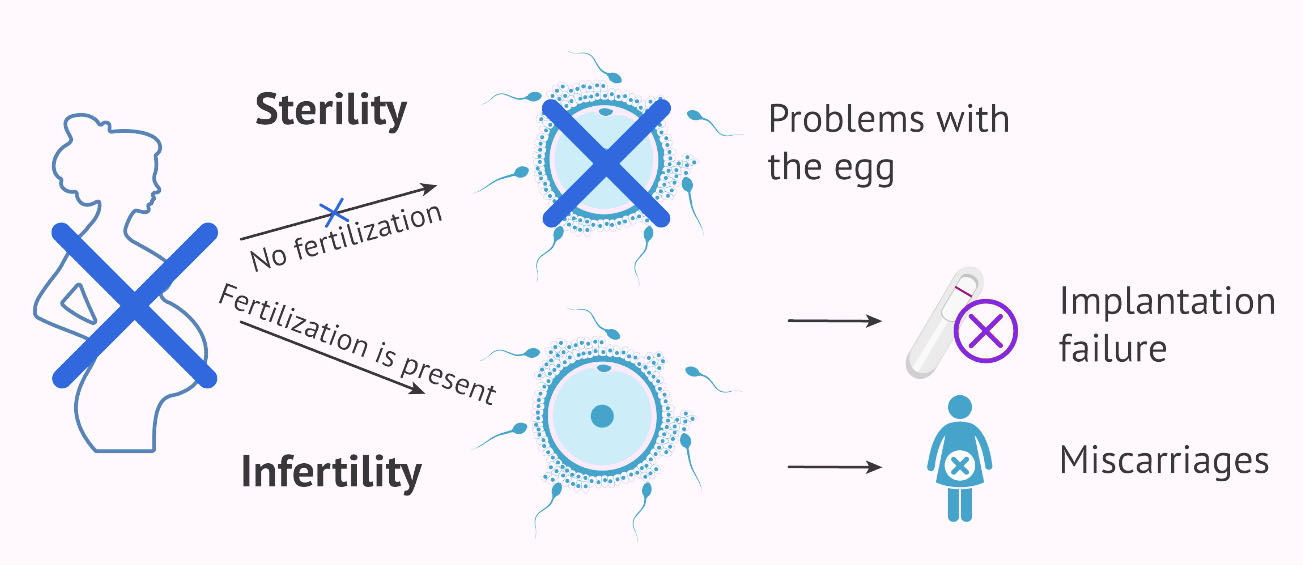
Less common causes of fertility problems in women include:
blocked fallopian tubes due to pelvic inflammatory disease, endometriosis, or surgery for an ectopic pregnancy physical problems with the uterus
Uterine fibroids many things can affect a woman’s ability to have a baby. These include:
- Age
- Stress
- Poor diet
- Athletic training
- Being overweight or underweight
- Tobacco smoking
- Alcohol
- Sexually transmitted diseases (STDs)
- Health problems that cause hormonal changes
Types of Infertility Treatment
Infertility treatments fall into three basic categories:
Ovulation Induction
This approach involves the administration of infertility drugs in order to induce ovulation. Fertility treatment with ovulation induction is especially helpful for women who have irregular menstrual cycles.
Artificial Insemination
This method of infertility treatment involves the injection of sperm into the female reproductive tract in order to facilitate fertilization. Artificial insemination may also require the use of infertility drugs.
Assisted Reproductive Technology (ART) – IVF and More
These infertility treatments involve the removal and reimplantation of ova from female patients in order to facilitate fertilization. There are several types of ART fertility treatments, including in vitro fertilization (IVF), gamete intrafallopian transfer (GIFT), zygote intrafallopian transfer (ZIFT), and intracytoplasmic sperm injection (ICSI):
- In Vitro Fertilization (IVF) – This infertility treatment involves the harvesting and fertilization of female ova outside the body and the subsequent placement of the embryos into the uterus.
- Gamete Intrafallopian Transfer (GIFT) – This fertility treatment is very similar to IVF, except that the harvested eggs are not fertilized in the laboratory. Instead, the ova and sperm are placed directly into the fallopian tubes, where fertilization will hopefully occur. The success rate of GIFT is approximately 30 percent.
- Zygote Intrafallopian Transfer (ZIFT) – This infertility solution is similar to both IVF and GIFT. With ZIFT, the egg is fertilized with sperm in the laboratory, forming a zygote, but is not allowed to develop into an embryo. The zygote is then placed in the fallopian tubes. The success rate for ZIFT is approximately 28 percent.
- Intracytoplasmic Sperm Injection (ICSI) – This increasingly popular fertility treatment involves the injection of a single sperm directly into an ovum (mature egg). Then, similar to IVF, the embryo is placed into the uterus. The success rate of ICSI ranges from 15 to 20 percent.
What is involved with in vitro fertilization?
There are basically five steps in the IVF and embryo transfer process which include the following:
- Monitor and stimulate the development of healthy egg(s) in the ovaries.
- Collect the eggs.
- Secure the sperm.
- Combine the eggs and sperm together in the laboratory and provide the appropriate environment for fertilization and early embryo growth.
- Transfer embryos into the uterus.
Step 1: Fertility medications are prescribed to control the timing of the egg ripening and to increase the chance of collecting multiple eggs during one of the woman’s cycles. This is often referred to as ovulation induction. Multiple eggs are desired because some eggs will not develop or fertilize after retrieval. Egg development is monitored using ultrasound to examine the ovaries and urine or blood test samples to check hormone levels.
Step 2: Your eggs are retrieved through a minor surgical procedure which uses ultrasound imaging to guide a hollow needle through the pelvic cavity. Sedation and local anesthesia are provided to remove any discomfort that you might experience. The eggs are removed from the ovaries using the hollow needle, which is called follicular aspiration. Some women may experience cramping on the day of retrieval, which usually subsides the following day; however, a feeling of fullness or pressure may last for several weeks following the procedure.
Step 3: Sperm, usually obtained by ejaculation is prepared for combining with the eggs.
Step 4: In a process called insemination, the sperm and eggs are placed in incubators located in the laboratory which enables fertilization to occur. In some cases where fertilization is suspected to be low, intracytoplasmic sperm injection (ICSI) may be used. Through this procedure, a single sperm is injected directly into the egg in an attempt to achieve fertilization. The eggs are monitored to confirm that fertilization and cell division are taking place. Once this occurs, the fertilized eggs are considered embryos.
Step 5: The embryos are usually transferred into the woman’s uterus anywhere from one to six days later, but most commonly it occurs between two to three days following egg retrieval. At this point, the fertilized egg has divided to become a two-to-four cell embryo. The transfer process involves a speculum which is inserted into the vagina to expose the cervix. A predetermined number of embryos are suspended in fluid and gently placed through a catheter into the womb. This process is often guided by ultrasound. The procedure is usually painless, but some women experience mild cramping.
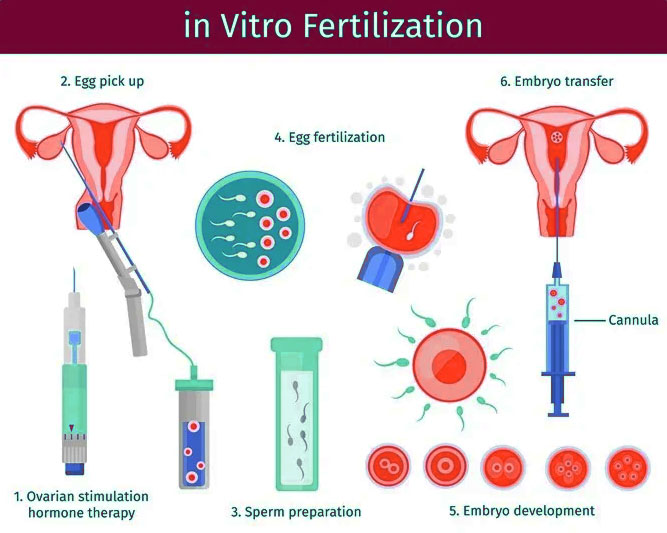
These steps are followed by rest and watching for early pregnancy symptoms. A blood test and potentially an ultrasound will be used to determine if implantation and pregnancy has occurred.
Are there variations of in vitro fertilization?
Gamete intrafallopian transfer (GIFT) and zygote intrafallopian transfer(ZIFT) are two procedures related to IVF.
GIFT is similar to IVF, but the gametes (egg and sperm) are transferred to the fallopian tubes rather than the uterus, and fertilization takes place in the tubes rather than in the laboratory. GIFT also involves a laparoscopic surgical procedure to transfer the sperm and egg into the tubes. GIFT accounts for approximately 2% of assisted reproductive technology (ART) procedures in the United States.
ZIFT differs from GIFT in that the fertilization process still takes place in the laboratory versus the fallopian tubes. It is similar to GIFT in that the fertilized egg is transferred into fallopian tubes, and it involves a laparoscopic surgical procedure. ZIFT accounts for less than 1.5% of assisted reproductive technology (ART) procedures in the United States.
How successful is in vitro fertilization?
The success rate of IVF clinics depends on a number of factors including patient characteristics and treatment approaches. It is also important to realize that pregnancy rates do not equate to live birth rates. In the United States, the live birth rate for each IVF cycle started is approximately:
- 30 to 35% for women under age 35
- 25% for women ages 35 to 37
- 15 to 20% for women ages 38 to 40
- 6 to 10% for women ages over 40
The success rates of individual clinics are published on the web site of the Centers for Disease Control and Prevention.
When comparing success rates of different clinics, it is important to know what type of pregnancies are being compared. A chemical pregnancy is one confirmed by blood or urine tests, but a miscarriage may occur before confirmation through an ultrasound. A clinical pregnancy is one verified by ultrasound. After a clinical pregnancy has been verified, a miscarriage may still occur, but it is less likely.
What if I don’t produce healthy eggs or my husband is sterile?
IVF may be done with a couple’s own eggs and sperm or with donor eggs, sperm, or embryos. Some couples choose to use donor eggs, sperm, or embryos because of genetic concerns. Donor eggs are used in approximately 10% of all assisted reproductive technology (ART) cycles.
What are the risks associated with in vitro fertilization?
As with most medical procedures, there are some potential risks. The risks of in vitro fertilization depend upon each specific step of the procedure.
Ovary stimulation carries the risk of hyperstimulation, where the ovaries become swollen and painful. This condition, “Ovarian Hyper stimulation Syndrome”, is usually rare, mild, and involves the following potential side affects: nausea, vomiting, lack of appetite, or a feeling of being bloated. More severe symptoms which occur in 1% of cases, include the following:
- Severe abdominal pain
- Severe nausea or vomiting
- Decreased urinary frequency
- Dark-colored urine
- Shortness of breath
- Ten pound weight gain within three to five days
Egg retrieval and the use of laparoscopy carry the typical risks related to anesthesia. Additionally, there is a slight risk of bleeding, infection, and damage to the bowel, bladder, or a blood vessel. Less than one patient in 1,000 will require surgery to repair damage caused during the egg retrieval process.
The chance of a multiples pregnancy is increased in all assisted reproductive procedures. There are additional risks and concerns related to multiples during pregnancy such as increased risk of premature delivery.
Assisted reproductive technology (ART) involves a significant physical, financial, and emotional commitment on the part of the couple. Psychological stress and emotional problems are common, and even more so if IVF is unsuccessful.
Read : List of Top 10 IVF Specialist in India 2024
How many embryos should be created or transferred?
The number of embryos that should be created or transferred during any single IVF cycle is open to debate. It has been said in the medical literature that transferring no more than four embryos per IVF cycle will yield optimal results. Transferring more than four is believed to result in excess numbers of multiple pregnancies, which increases the possibility of other complications.
Transferring four embryos versus one or two increases the probability that pregnancy will occur, but it is important to realize that all four embryos could implant. Some people have concerns regarding what happens to leftover embryos, so this would be something that the couple would want to thoroughly discuss with their physician.
IVF Treatment in India by HealthYatra
The associate hospitals of HealthYatra are committed to treating patients with compassion, and medical excellence. Our International Patient Program offers support to the patients and family members who find themselves at great distances from home, facing new people, places and medical procedures. The lush green 30-acre campus offers an ideal environment of healing in the midst of nature’s bounty. The wellness centre offers gymnasium, yoga, meditation, pebble walk and other facilities for holistic healthcare. Guest room facilities are available to accommodate patient families.
The associate hospitals of HealthYatra services are supported by sophisticated technology that is made available to improve the precision and speed in diagnosis. The use of technology by experienced medical professionals in enhancing patient care is special to the Apollo service. The latest technology is effectively employed in diagnosis as well as treatment of the patient. Service excellence is achieved through an ideal blend of medical brilliance and personalized care. Keeping with the tradition of delivering healthcare on par with the best in the world, Apollo relies a great deal on innovation, introspection and improvement to render tender, loving patient care. Apollo provides holistic healthcare that includes prevention, excellent treatment, rehabilitation and health education for patients and their families. Pleasant, comfortable, air-conditioned patient rooms equipped with nurse call systems, television, refrigerator and telephone aid in journey from illness to wellness. Cuisine to suit international tastes is an integral part of our food and beverage services. Our nursing care is based on internationally recognized nursing standards.
IVF treatment in India is gaining popularity because at least one, out of every ten couples in India suffers from infertility problems .IVF Treatment in India is about 20% of what it would cost in America. Including all of the medicine that is provided for the treatment. Cost for medicine in India is much lower then in America. More that, the cost of this medicine in America would be more than the entire treatment cost us in India. So, the trip to India might be beneficial in many different areas at the same time. You can conceive a baby, forget about your daily routine and relax, look at the country and learn about its culture.
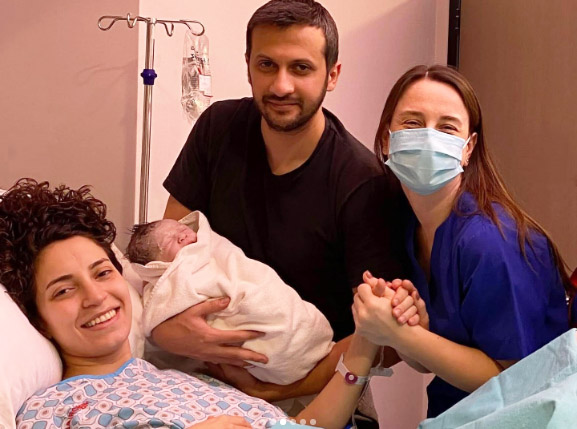
Recently a Couple from Norway got their Infertility treatment in India through HealthYatra. This is what they want to say after their IVF treatment in India.” We had been married for 12 years and had numerous failed IVF attempts for almost 11 years. We lost all hope and thought this was the end to our dream of having children. We were going to India for our holidays soon as we had heard a lot about HealthYatra.com after a lot of mails exchanged and discussions we came to an agreement on a package to come to India. And we decided to attempt IVF one last time. There was this gut feeling that we were taking the right decision and would definitely succeed this time. When we arrived we were picked up by HealthYatra from the airport. We started the IVF cycle immediately. The friendly and personal attention given by the Indian doctors and their staff at the clinic was so reassuring. They took such a keen interest in our case, were so positive and cheerful, that this attitude rubbed off on us as well. This was the first time where we had been so happy and relaxed during an IVF attempt. We had been through numerous IVF attempts in Norway. There we felt that we were just one amongst so many and got to see the doctor at the operating theatre only. It was all just so “clinical and scientific”. We cannot describe our joy, when in 14 days after my embryo transfer, my blood test showed positive & high levels of HCG! I cried with joy. Eight months later, I delivered baby boys. They were healthy in spite of being a few weeks premature. Every time, we look at our little bundles of joy, we feel overwhelmed with gratitude for the doctors in India and cannot thank them enough in words. Our dream has finally come true”.
[contact-form-7 id=”536″ title=”Contact form 1″]
KEYWORDS : IVF Treatment in India, IVF Treatment Cost in India 2024, free ivf treatment in india, ivf in india for foreigners, ivf injections cost in india, financial help for ivf treatment in india, ivf cost in india 2024, indira ivf price list, best ivf treatment in india, ivf package cost, ivf injections cost in india, ivf treatment for baby boy in india cost, ivf cost in india in dollars, ivf package cost, lowest ivf cost in india, free ivf treatment in india, ivf in india for foreigners, ivf cost and success rate, best ivf centre in delhi with price, free ivf treatment in delhi, best ivf doctor in delhi, ivf treatment cost in aiims delhi, ivf treatment cost in delhi, top 5 ivf center in delhi, best government ivf centre in delhi, top 10 ivf centre in delhi, top 5 ivf doctors in mumbai, free ivf treatment in mumbai, best ivf doctor in mumbai, best ivf centre in mumbai, low cost ivf centre in mumbai, ivf treatment cost in mumbai, best ivf centre in mumbai? – quora, top 10 ivf doctors in mumbai, ivf treatment near me, cheap ivf treatment near me, cheapest ivf clinic near me, list of top 10 best ivf centre in india

